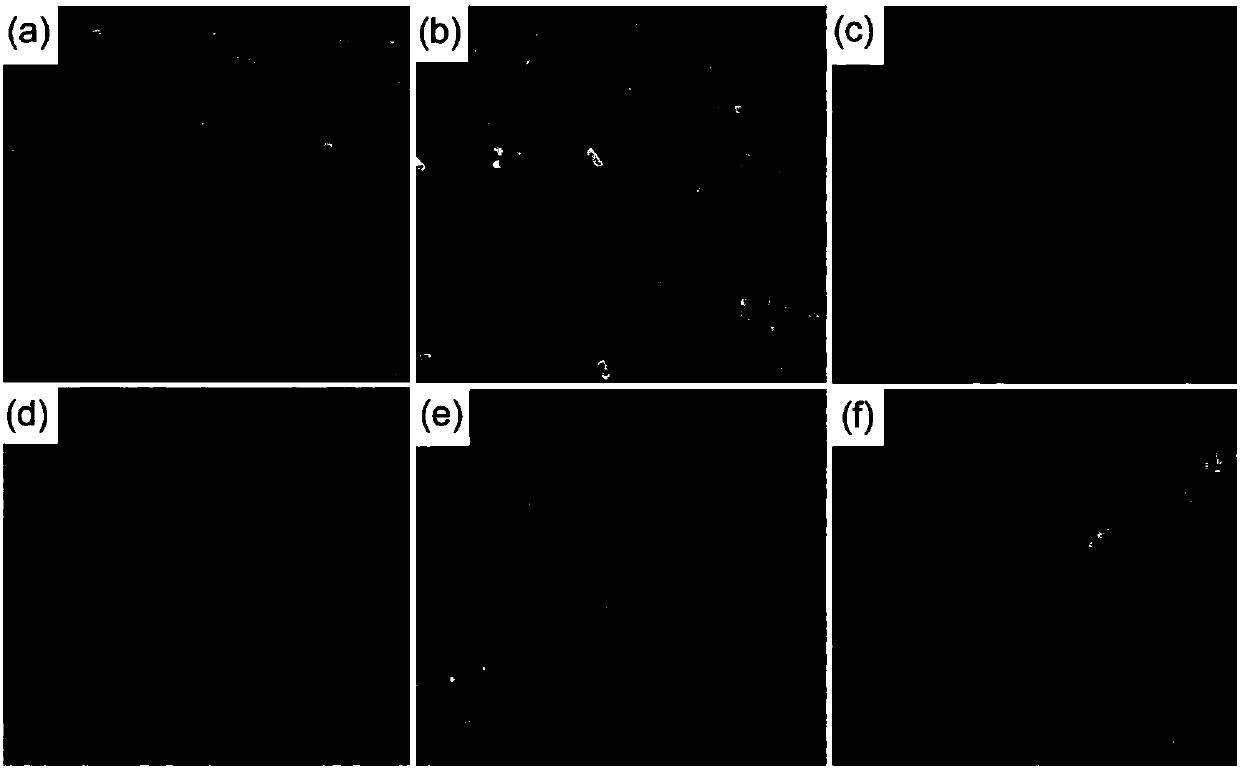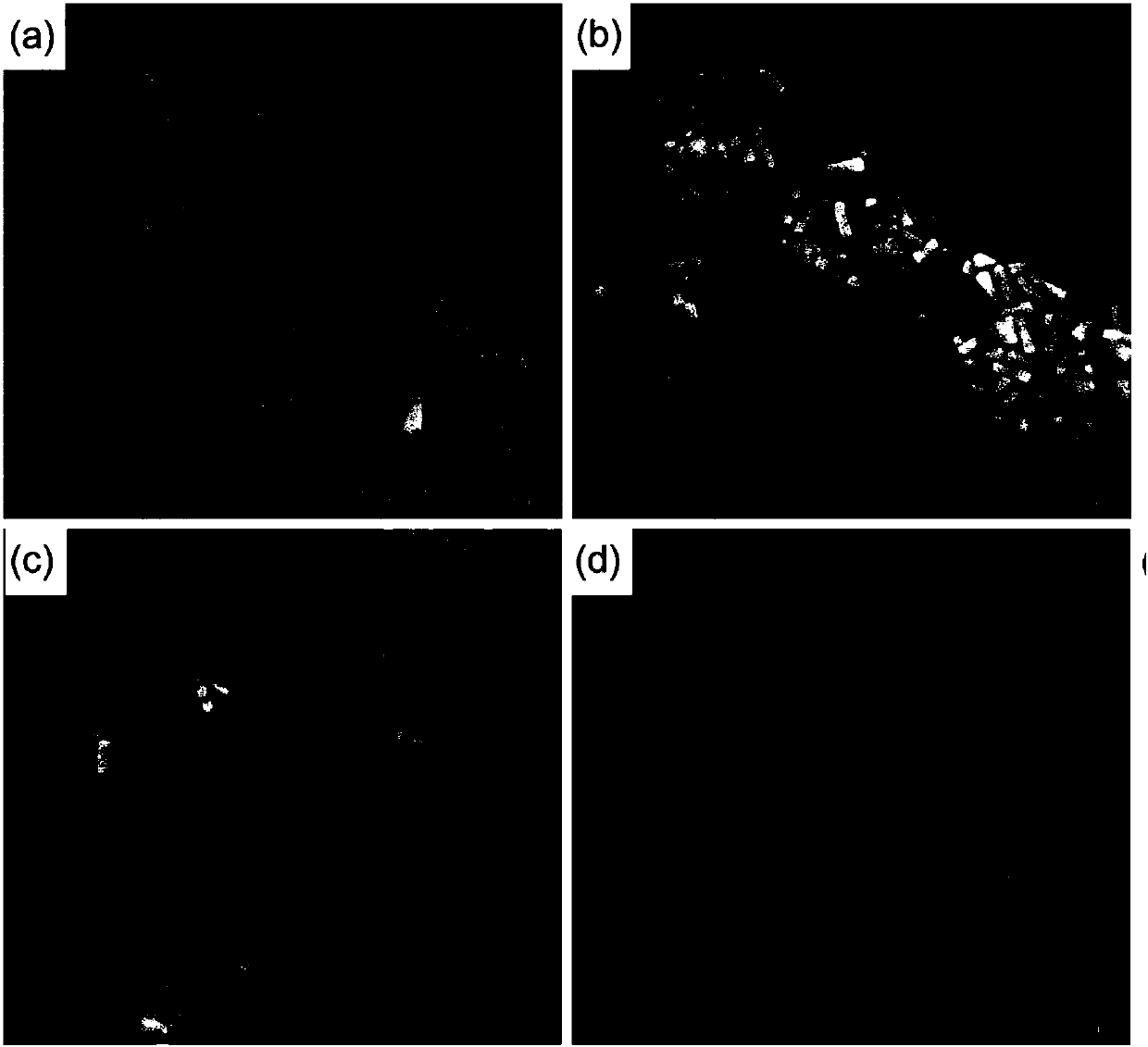Left-side stellate ganglion inhibitor based on near infrared laser illumination
A technology of laser irradiation and ganglion, applied in the field of medical application of nanomaterials, to achieve the effect of preventing and treating malignant ventricular arrhythmia, high dispersion and low biological toxicity
- Summary
- Abstract
- Description
- Claims
- Application Information
AI Technical Summary
Problems solved by technology
Method used
Image
Examples
Embodiment 1
[0028] Use silver ions to regulate the length of gold nanorods: follow the steps below
[0029] 1. Preparation of gold nano seed solution: add chloroauric acid solution (50 μL, 0.05M) into a glass bottle equipped with CTAB aqueous solution (10mL, 0.1M), and prepare 0.6mL ice water under magnetic stirring (1200rpm). 0.01M NaBH 4 Add the solution into the solution, continue to stir for 2 minutes until it turns brown, and store the seed solution at room temperature for 2 hours before using it.
[0030] 2. Growth of gold nanorods with different lengths: add chloroauric acid solution (200μL, 0.05M) into CTAB aqueous solution (20mL, 0.1M), prepare 6 groups in the same proportion, numbered 1, 2, 3, 4, 5, 6. Then add 40, 80, 120, 160, 200, 240 μL of silver nitrate solution (0.01M) to the 6 groups of solutions at a time and mix well, then add new L-ascorbic acid solution (160 μL, 0.1M ) to make growth fluid. After the obtained solutions were mixed, the color of the growth solution c...
Embodiment 2
[0032] The diameter of the gold nanorod is controlled by the amount of gold nano seed solution added, and the specific steps are as follows:
[0033]1. Preparation of gold nano seed solution: Add chloroauric acid solution (50 μL, 0.05M) into a glass bottle containing CTAB aqueous solution (10mL, 0.1M), and stir 0.6mL ice water under magnetic stirring (1200rpm) to prepare 0.01 M NaBH 4 Add it into the solution, continue to stir for 2 minutes until the solution turns brown, and store the seed solution at room temperature for 2 hours before using it.
[0034] 2. The growth of gold nanorods with different diameters: by mixing chloroauric acid solution (200 μL, 0.05M), silver nitrate solution (200 μL, 0.01M) and CTAB aqueous solution (20mL, 0.1M) in a glass tube, and then adding Freshly prepared L-ascorbic acid solution (160 μL, 0.1M) was used as a growth solution. After mixing the obtained solutions, the color of the growth solution changed from light yellow to colorless under m...
Embodiment 3
[0036] Precise preparation of gold nanorods with an absorption peak at 808nm, the specific steps are as follows:
[0037] 1. Preparation of gold nano seed solution: add chloroauric acid solution (50 μL, 0.05M) into a glass bottle containing CTAB aqueous solution (10mL, 0.1M), and 0.01 M NaBH 4 Add it into the solution, and continue to stir for 2 minutes until it turns brownish yellow to obtain a gold nanometer seed solution; store the gold nanometer seed solution at room temperature for 2 hours before using it.
[0038] 2. Growth of gold nanorods with different lengths: Add chloroauric acid solution (200 μL, 0.05M) into CTAB aqueous solution (20mL, 0.1M), add 200 μL of silver nitrate solution (0.01M) and mix well, then add Freshly prepared L-ascorbic acid solution (160 μL, 0.1M) was used as a growth solution. After mixing the obtained solutions, the color of the growth solution changed from light yellow to colorless under mild stirring conditions. Then, 400 μL of HCl (1.0 M...
PUM
| Property | Measurement | Unit |
|---|---|---|
| Concentration | aaaaa | aaaaa |
Abstract
Description
Claims
Application Information
 Login to View More
Login to View More - R&D
- Intellectual Property
- Life Sciences
- Materials
- Tech Scout
- Unparalleled Data Quality
- Higher Quality Content
- 60% Fewer Hallucinations
Browse by: Latest US Patents, China's latest patents, Technical Efficacy Thesaurus, Application Domain, Technology Topic, Popular Technical Reports.
© 2025 PatSnap. All rights reserved.Legal|Privacy policy|Modern Slavery Act Transparency Statement|Sitemap|About US| Contact US: help@patsnap.com



